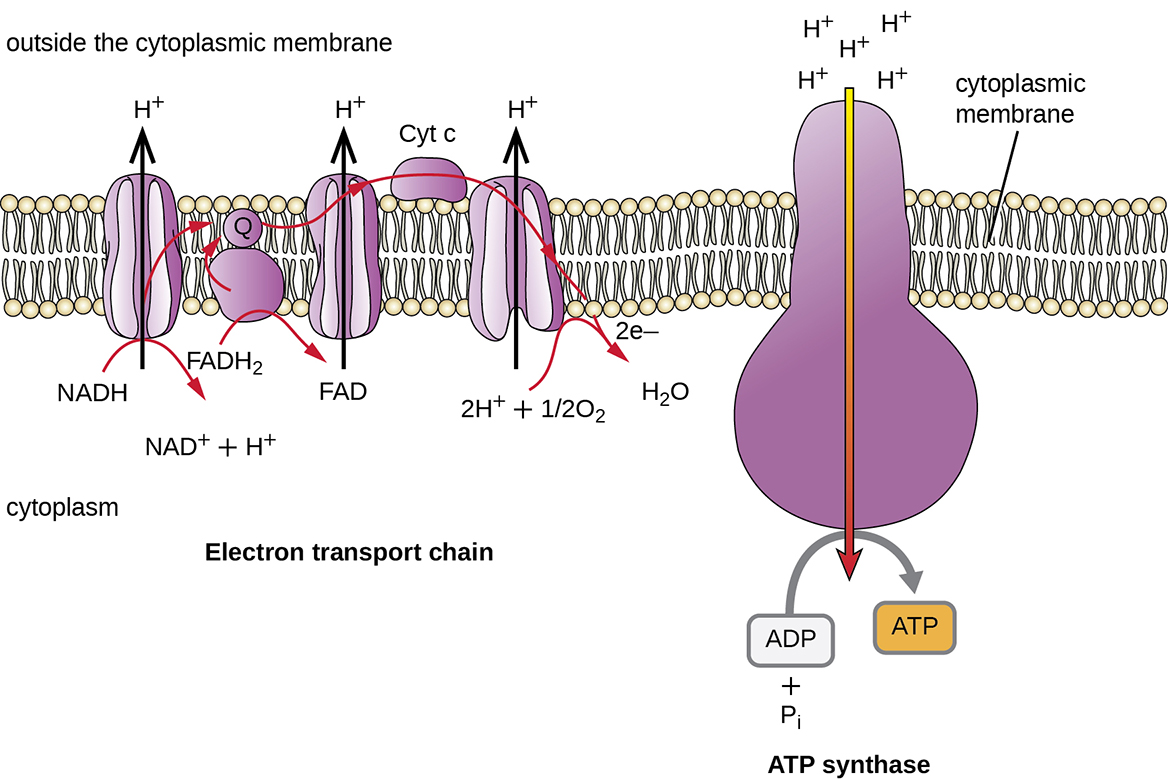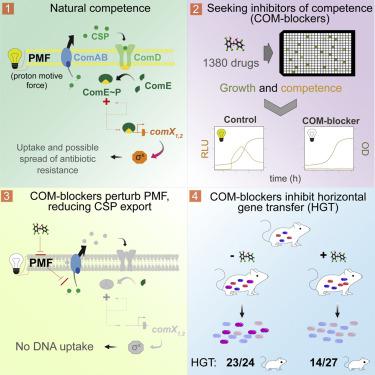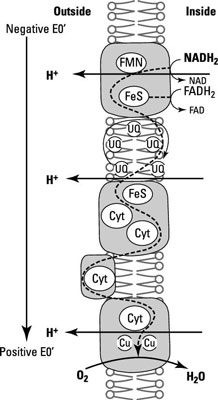Proton motive force PMF of most bacteria. At a pH of less than 57 there was a large decrease in proton motive force and this decrease corresponded to the inhibition of cellobiose utilization.

Proton Motive Force Generating Secondary Transport Processes Download Scientific Diagram
Bacteria acquire phosphate P i by maintaining a periplasmic concentration below environmental levels.

Proton motive force in bacteria. Proton motive force and the physiological basis of delta pH maintenance in thiobacillus acidophilus. The latter stimulated antibiotic uptake as determined using fluorescently labelled tobramycin in combination with flow cytometry analysis. A CRITICAL ASSESSMENT OF METHODS.
The overall process of creating energy in. Exogenous control of PMF could allow the use of agellated bacteria as microactuators. Engineering photosystems into microorganisms.
Following recent work we have engineered cells to express a uorescent membrane protein proteorhodopsin optical proton sensor PROPS to report PMF allowing real-time monitoring. Collapsing the PMF is an ideal mechanism for a toxin involved in cannibalism and biofilm defence since this would incapacitate neighbouring cells by inhibiting motility and secretion of proteins and toxins. Claassens NJ Volpers M dos Santos VA van der Oost J de Vos WM.
After being hit by a photon of light the potential changes to -10V which is insufficient to reduce NAD P with its E0 of -032V. Phosphorus P is a macronutrient universally required by all. The PMF is subsequently necessary for ATP synthesis by the F 1 F 0-ATPase and for transport of various solutes Mitchell 1966.
In respiring bacteria under physiological conditions ATP synthase in general runs in the opposite direction. The proton motive force PMF. Growth of Thiobacillus ferrooxidans on various substrates.
Provided herein are compositions and methods to improve treatment. In mitochondria energy released by the electron transport chain is used to move protons from the mitochondrial matrix N side to the. Biochemical and phenotypic assays indicated that 3-D cell conditioned medium stimulated the proton motive force PMF resulting in increased bacterial intracellular pH.
The PMF is made up of the sum of two parameters. IMPORTANCEAn electrochemical proton gradient across the cytoplasmic membrane alternatively known as proton motive force energizes vital cellular processes in bacteria including ATP synthesis nutrient uptake and cell division. THE PROTON MOTIVE FORCE IN BACTERIA.
From extracellular pH 69 to 57 the decrease in delta psi was compensated for by an increase in delta pH and the proton motive force ranged from 152 to 158 mV. Proton Motive Force Disruptors Block Bacterial Competence and Horizontal Gene Transfer. In bacteria the extrusion of protons by the electron transport chain results in an electrochemical gradient of protons known as the proton motive force PMF generated across the cell membrane.
This creates ATP while using the proton motive force created by the electron transport chain as a source of energy. Thus autotrophic purple bacteria must engage in a process known as reverse electron flow using energy from the proton motive force to drive electrons up the electron tower. In bacteria the extrusion of protons by the electron transport chain results in an electrochemical gradient of protons known as the proton motive force PMF generated across the cell membraneThePMFissubsequentlynecessaryforATPsynthe-sis by the F 1F 0-ATPase and for transport of various solutes Mitchell 1966.
In most cases the proton-motive force is generated by an electron transport chain which acts as a proton pump using the Gibbs free energy of redox reactions to pump protons hydrogen ions out across the membrane separating the charge across the membrane. Potential of proton-pumping rhodopsins. Accumulation of ambient phosphate into the periplasm of marine bacteria is proton motive force dependent ABSTRACT.
PMC free article McGoran CJ Duncan DW Walden CC. These approaches and therapeutic methods are also useful with non-metabolic chemicals that induce proton-motive force in bacteria. In Mitchells chemiosmotic theory a proton H motive force across the membrane p generated by the respiratory chain drives F 1 F o-ATPase for ATP production in various organisms.
Basically this causes the cell to act like a tiny battery. Matin A Wilson B Zychlinsky E Matin M. Its energy can either be used right away to do work like power flagella or be stored for later in ATP.
The proton motive force occurs when the cell membrane becomes energized due to electron transport reactions by the electron carriers embedded in it. The bulk-base chemiosmotic theory cannot account for ATP production in alkaliphilic bacteria.

Cellular Respiration Microbiology

Micro Physio Chp 4 Membrane Bioenergetics The Proton Potential Flashcards Quizlet

Figure 1 From Probing The Dynamics Of The Proton Motive Force In E Coli Semantic Scholar

Antiinfectives Targeting Enzymes And The Proton Motive Force Pnas

Variation In Bacterial Atp Level And Proton Motive Force Due To Adhesion To A Solid Surface Applied And Environmental Microbiology

Ppt The Proton Motive Force 16 1 617 Powerpoint Presentation Free Download Id 6461092

Predicted Membrane Structure And Proton Motive Force Mechanisms From Download Scientific Diagram

8 3 Cellular Respiration Microbiology Canadian Edition

Fermentation Revisited How Do Microorganisms Survive Under Energy Limited Conditions Trends In Biochemical Sciences

A Proton Ratchet For Coupling The Membrane Potential To Protein Transport Biorxiv

Proton Motive Force Disruptors Block Bacterial Competence And Horizontal Gene Transfer Cell Host Microbe X Mol

Proton Motive Force An Overview Sciencedirect Topics

The Proton Motive Force Dummies

Light Harvesting And Generation Of The Proton Motive Force In Prp Download Scientific Diagram

110 Proton Motive Force Youtube

Ppt The Proton Motive Force Powerpoint Presentation Free Download Id 2214340

A Proton Ratchet For Coupling The Membrane Potential To Protein Transport Biorxiv


